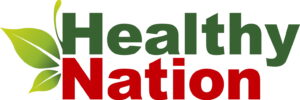Aflatoxins are highly toxic compounds produced by certain molds that can contaminate various food products, including milk. The presence of aflatoxin in dairy products poses significant risks to human health, as these compounds are known carcinogens and can have detrimental effects on the liver and immune system.
Understanding the causes of aflatoxin contamination in milk is crucial for ensuring the safety and quality of dairy products. This article explores the sources, factors, impacts, detection methods, prevention strategies, and regulatory measures related to aflatoxin in milk, providing valuable insights for dairy farmers, food producers, regulators, and consumers alike.
Introduction to Aflatoxin Contamination in Milk
Milk, a staple in many diets, is not immune to potential contaminants like aflatoxins. These harmful substances can find their way into dairy products and pose health risks to consumers.
Understanding Aflatoxins and Their Impact on Dairy Products
Aflatoxins are toxic compounds produced by certain molds that can contaminate food and feed, including milk. When consumed, aflatoxins can have detrimental effects on human and animal health, making it crucial to understand their presence in dairy products.
Sources of Aflatoxin Contamination in Dairy Farming
The journey of aflatoxins into milk starts on the farm, where various factors contribute to their presence in dairy production.
Overview of Aflatoxin-Producing Fungi in Agriculture
Aflatoxins are primarily produced by molds such as Aspergillus flavus and Aspergillus parasiticus, which thrive in warm and humid climates common in agricultural settings.
Common Pathways of Aflatoxin Contamination in Dairy Production
Aflatoxins can enter the dairy production chain through contaminated animal feed, poor storage practices, and environmental conditions that promote mold growth, leading to potential contamination of milk.
Factors Contributing to Aflatoxin Formation in Milk
Understanding the conditions that favor aflatoxin production in milk can help in implementing preventive measures to ensure milk safety.
Environmental Conditions Favorable for Aflatoxin Production
Factors such as temperature, moisture levels, and poor ventilation can create an ideal environment for aflatoxin-producing molds to thrive in feed and contaminate milk.
Storage and Feed Management Practices Influencing Aflatoxin Levels
Inadequate storage facilities and improper feed management can increase the risk of aflatoxin contamination in milk. Monitoring storage conditions and feed quality is crucial in preventing aflatoxin formation in dairy products.
Impact of Aflatoxin on Human Health
Consuming milk contaminated with aflatoxins can have serious implications for human health, emphasizing the need for stringent regulations and monitoring in the dairy industry.
Health Risks Associated with Aflatoxin Exposure through Milk Consumption
Exposure to aflatoxins through contaminated milk can lead to liver damage, impaired immune function, and an increased risk of liver cancer, highlighting the importance of minimizing aflatoxin levels in dairy products.
Regulatory Limits and Health Guidelines for Aflatoxin in Food Products
Regulatory authorities worldwide have set limits on aflatoxin levels in food products, including milk, to protect consumer health. Adhering to these guidelines and implementing quality control measures is essential for ensuring the safety of dairy products.
Methods for Detecting Aflatoxin in Milk
Techniques and Technologies for Aflatoxin Detection in Dairy Samples
When it comes to sniffing out aflatoxin in milk, scientists and food experts have some pretty nifty tools up their sleeves. From high-tech chromatography methods to clever immunoassay tests, there are various techniques and technologies used to detect the pesky toxin lurking in dairy samples.
Challenges and Limitations in Aflatoxin Testing in Milk
While detecting aflatoxin in milk can be as important as finding that missing sock behind the dryer, it’s not always a walk in the park. Challenges like cross-contamination and the need for specialized equipment can make the testing process a bit tricky. However, with a dash of creativity and a sprinkle of determination, researchers continue to overcome these limitations.
Strategies to Prevent Aflatoxin Contamination in Milk
Preventive Measures at Farm Level to Minimize Aflatoxin Presence in Dairy Products
To keep aflatoxin at bay, farmers around the globe are implementing some ingenious preventive measures. From storing feed properly to ensuring cows have a balanced diet, these farm-level strategies help minimize the presence of aflatoxin in dairy products and keep our milk glasses half-full.
Quality Control and Monitoring Practices for Aflatoxin Prevention in Milk
When it comes to preventing aflatoxin contamination in milk, quality control and monitoring practices are the unsung heroes. Regular testing, stringent protocols, and eagle-eyed inspectors play a crucial role in ensuring that only the purest, aflatoxin-free milk makes its way to our breakfast tables.
Regulatory Measures and Guidelines for Aflatoxin Control in Dairy Products
International Standards and Regulations on Aflatoxin Limits in Dairy Foods
When it comes to keeping aflatoxin in check, there are international standards and regulations that set the bar high. These guidelines help ensure that dairy products meet stringent aflatoxin limits, protecting consumers from any unwanted surprises in their milk cartons.
Compliance and Enforcement Strategies for Aflatoxin Control in Dairy Industry
To make sure everyone plays by the rules when it comes to aflatoxin control, compliance and enforcement strategies come into play. From regular inspections to hefty fines for non-compliance, these measures keep the dairy industry on its toes and uphold the integrity of our milk supply.
In conclusion, addressing the causes of aflatoxin contamination in milk is essential for safeguarding public health and ensuring the integrity of dairy products. By implementing effective preventive measures, monitoring practices, and regulatory guidelines, stakeholders can mitigate the risks associated with aflatoxin exposure and uphold the safety of the dairy industry. Increased awareness, collaboration, and adherence to quality control standards are vital in minimizing aflatoxin presence in milk and promoting a healthier food supply chain for consumers worldwide.










